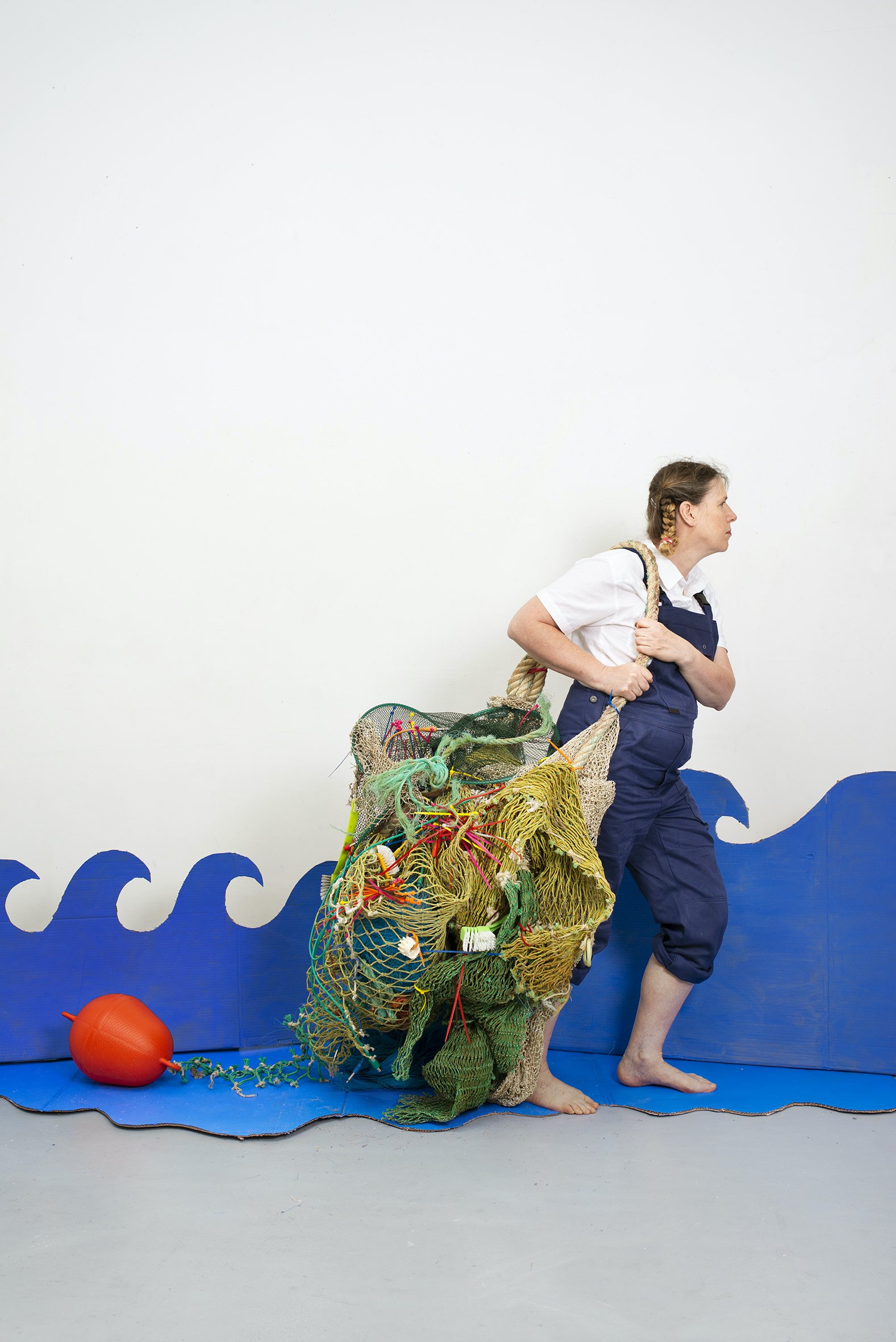Chairing the Circle
Unlike most ocean plastic, discarded fishing nets can be recycled into the REX (photo: Annegien van Doorn).
You probably already know that once plastic has gotten into the ocean it’s too late: it’s a technical and logistical nightmare to sieve it back out. Much of it is already microplastic, drifting down to the deepest depths and sneaking back up the food chain with poisonous consequences. And even if you do manage to retrieve it, it turns out that it’s pretty much useless as far as industrial design is concerned.
“A lot of people always think that you can make all kinds of fantastic stuff from sea waste, but that's not realistic,” the designer Ineke Hans tells me. “Plastic that you find on the beach is far too dried up, the quality is not good enough. There is a lot of talk about saving plastic from the seas, but you cannot use it for production. And that is really shitty, but you have to be honest as well.”
Old carpets and toothbrushes are shredded for the injection-moulded chair.
Hans is honest about everything to do with her new project, REX, which is also sort of an old product. She designed the injection0moulded plastic chair in 2011 and it won awards, but production stalled when the original company set to produce it failed to invest properly in the necessary equipment, such as the moulds. Seeing the chair go to waste was a blow for Hans. “I think it’s a wonderful chair. And it was also a chair where I could show that a woman could do an injection-moulded chair,” she says. “For me, it was a big thing at the time that I could show that chair. Then it was also a big thing [for me] that it didn't happen.”
REX has now been snatched from the jaws of design purgatory by Circuform, a new furniture company dedicated to finding both old and new designs that can be produced according to the ideals of the circular economy. Not only will the resurrected REX be made from recycled plastic, thanks to new moulds that can handle the material, but Circuform will handle all of the complex logistics required of a closed-loop product. Anyone with a REX in need of repair or no longer wanted can return it to a local depot, where it will be cleaned, fixed and resold, or broken down into material to make another REX. A deposit return scheme from Circuform offers a €20 incentive for the drop off.
A deposit return scheme offers €20 for each REX brought back to a depot.
Rescued from its own untimely end, REX will also recycle used plastic. Although, as Hans points out, much ocean plastic is out of the question when it comes to the practicalities of industrial design, there is plenty of other sources of plastic lying around. “Materials such as fishing nets or components from old office chairs, carpets, toothbrushes can be shredded and used for this to make these chairs,” she explains.
Most importantly, the chair can be made at scale; it’s not some worthy sustainable prototype that would be impossible to mass produce when it comes down to it. “The problem is we cannot save the world with all these crafty objects, and people don't have the wallet to afford it,” says Hans, who feels that a lot of sustainable solutions on display at design fairs are impractical or too expensive. “We also have to make some moves in this industrial world.”
Returned chairs are cleaned and repaired to be resold.
Navigating the industrial world with REX was another challenge where Hans was glad to have the backing of Circuform. “It is not so easy to find a factory where they can use recycled plastic” she confides. “Everyone is talking about being sustainable. But not all the companies who are injection moulding want to use this shredded stuff. They want virgin material.”
This isn’t because manufacturers are monsters who want to extract petrochemicals and pollute the environment for fun – recycled plastic in an injection mould is a nightmare to work with. “It's a bit like if you go to a wood workshop, there's lots of people who would like to make a new table for you,” says Hans. “But if you would come in with old wood, they would say, ‘Yeah, but there are screws and nails in it. And I don't want that in my machines.’” And rigorous production is important for a chair intended for environments such as offices where it needs to hold up under constant use.
Unsalvageable chairs are shredded back down to make more furniture.
There’s a lot that has gone into getting REX rolling again, and it has a serious message about circular design to promote. But Hans and Circuform also wanted to have fun with the promotional shots that accompany the design. Zany and colourful, they show Hans dressed in natty dungarees going through exaggerated motions of the chair’s lifecycle. First, she removes the chair from it’s award-winning podium, then she tramps out of the sea carting a pile of fishing nets, which are fed into a Heath Robinson-esque machine to make a REX. The next triptych shows the chair being posted back through a chair-shaped slot at a deposit bank, where it is checked over and ultimately fed into a shredder machine (helpfully depicted by a plastic tub and a paddling pool) to begin its cycle once again.
The playful, cartoonish style was a deliberate ploy to prove that sustainable design doesn’t have to be in the tasteful yet muted shades of worthy greige and po-faced brown often found in eco-conscious shops. “We wanted to break out of that kind of world,” Hans says, “and also give it a little bit of fun.”
Words India Block
Photos Annegien van Doorn





